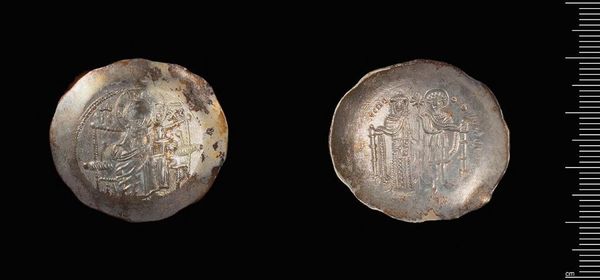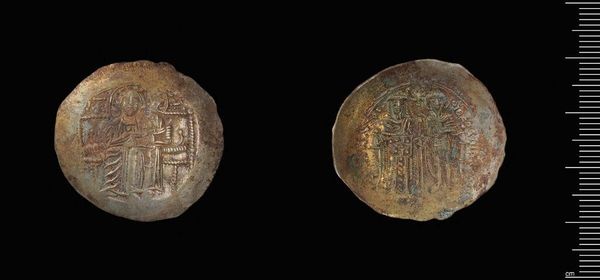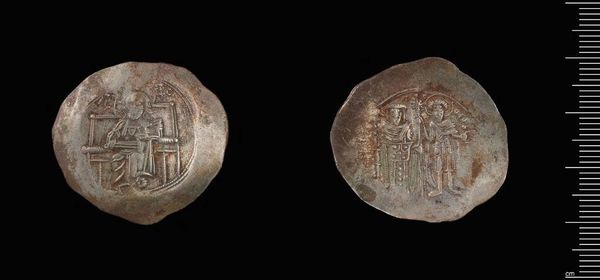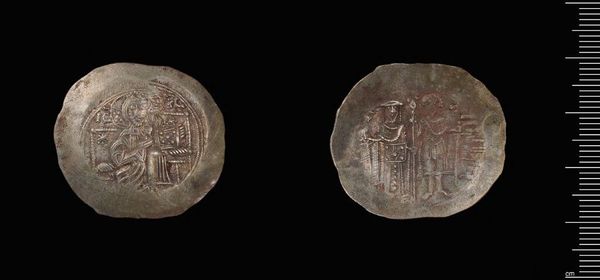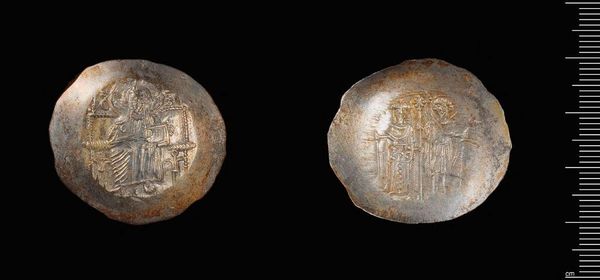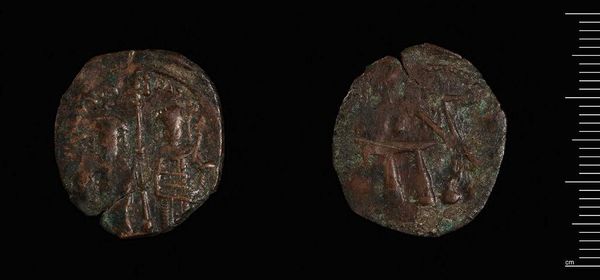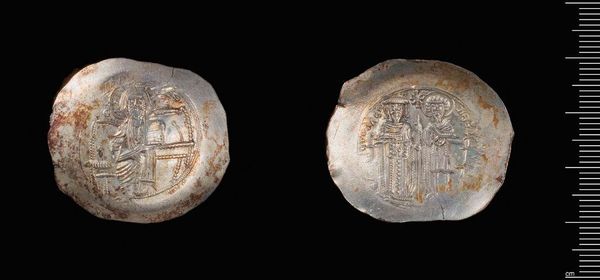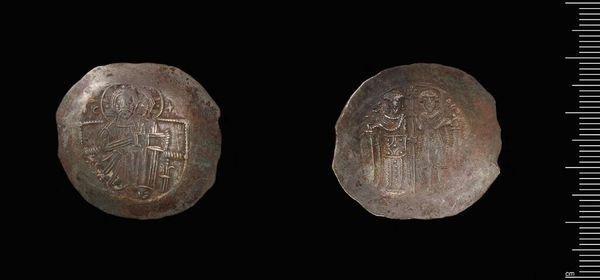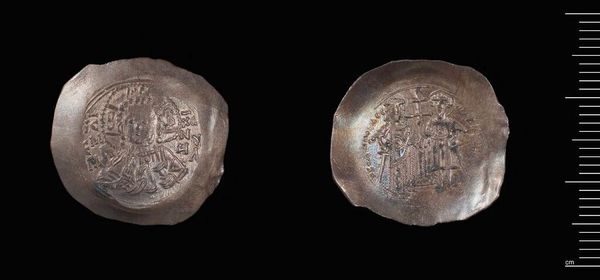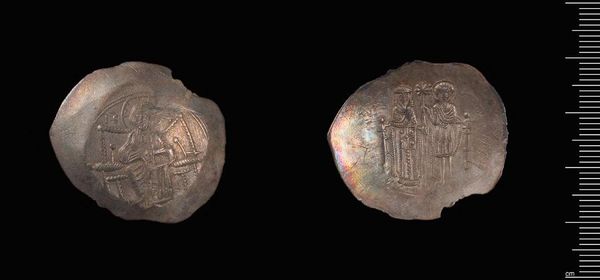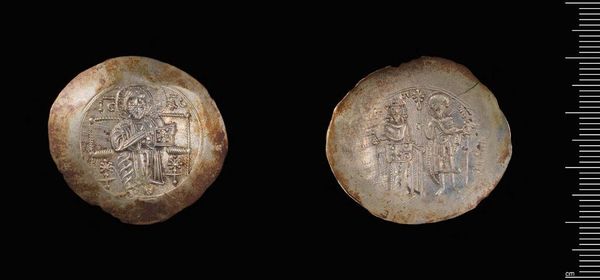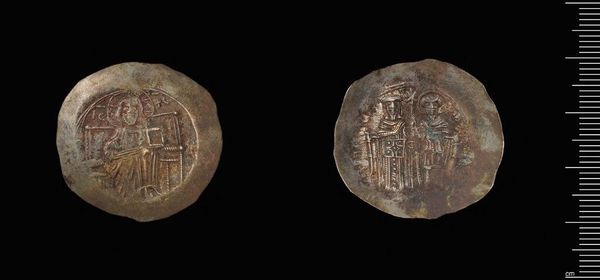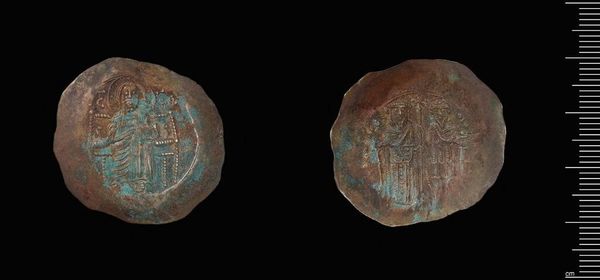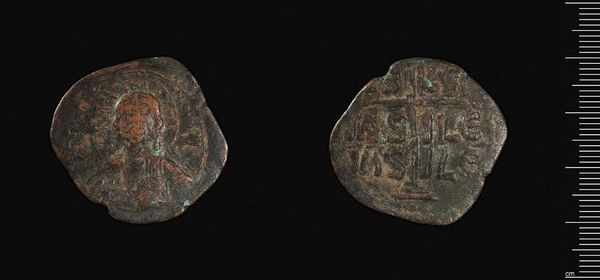
Dimensions: 3.96 g
Copyright: CC0 1.0
Curator: Welcome. Today, we're looking at a Byzantine Trachy Type B coin from Nicaea, issued by Theodore I. It's currently held in the Harvard Art Museums. Editor: The first thing that strikes me is how small and unassuming it is, yet it has such intricate details worked into the metal. It's like holding a tiny piece of history, quite literally. Curator: It gives insight into the social and political importance of imperial image circulation at the time. These coins were tools for asserting authority, especially for Theodore I in exile. Editor: Absolutely, and the materiality speaks volumes about the labor invested. Consider the skill needed to engrave such fine details onto metal in a pre-industrial setting. What base material was likely involved in creating such an artifact? Curator: Good question. The coin is made of billon, a mixture of silver and copper, a practical choice given the circumstances of the Empire of Nicaea. Editor: The imperfections, the wear, it all contributes to the narrative. It's not just an image; it's a testament to the passage of time, to economic systems, and to the hands that shaped it. Curator: It is a profound artifact, offering layers of meaning about rulership and society in a tumultuous era. Editor: Indeed. It brings the Byzantine world to life.
Comments
No comments
Be the first to comment and join the conversation on the ultimate creative platform.
